As the sun sets over a Sussex woodland, folk singer Sam Lee leads a small group of curious people to listen to the rare and beautiful song of the nightingale
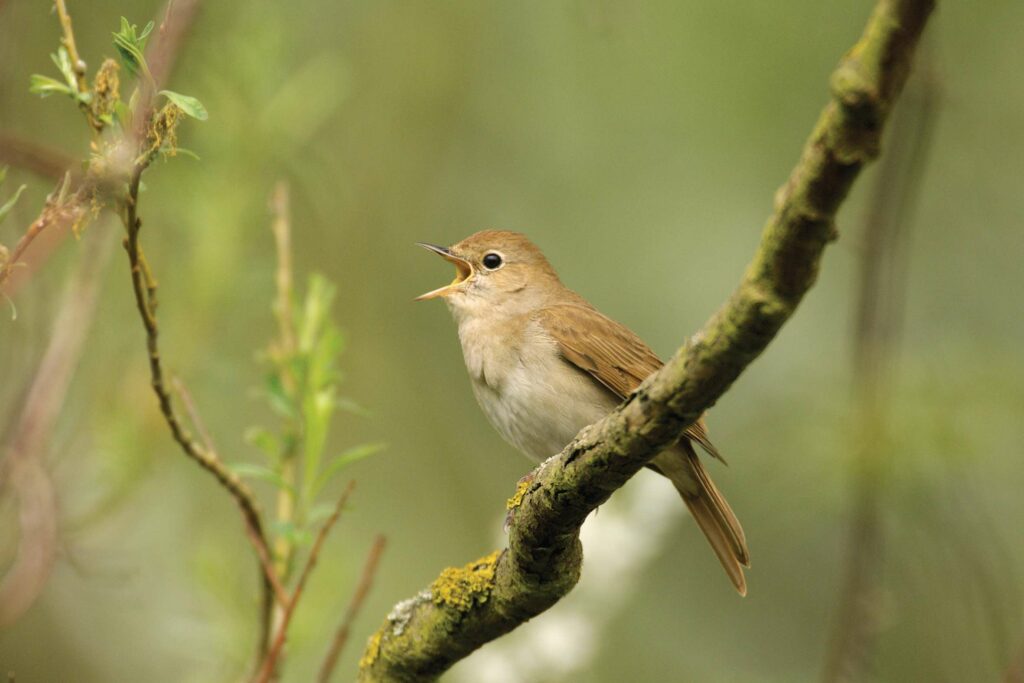
Listen
Hear Tanya’s podcast about the Singing with Nightingales experience, episode 147 of our Plodcast. countryfile.com/podcast
The silence is palpable. We sit motionless in the dark, goosebumps on our arms, listening intently to every rustle, creak and far-off snap of twig, waiting for a tweet, a call, anything that will tell us there is a nightingale somewhere in the vicinity. Like many in this little group, it will be the first time I have ever heard one. I can hardly dare breathe for fear of scaring it off.
It’s a chilly May night in Sussex, and I’m one of 15 people who have just walked half a mile through pitch-black countryside to sit on the prickly edge of a stubble field in the hope of hearing their first nightingale. But we’re not just here for the birds – we’re in the company of musicians who, almost unbelievably, are planning a real-life symphony with them, featuring human voices, a violin and an instrument called a shruti box.
However, like any diva worth its salt, the nightingale is making us wait. Three metres away, a soft note from a violin slowly rises through the air, lilting and growing to a dramatic crescendo. It’s my favourite kind of fiddle playing – crystal clear like the Slavic gypsy style, achingly beautiful and still with you long after it ends. To my surprise, this is followed by the full-bellied, unnuanced drone of the shruti box. But singer and author Sam Lee is an authority on both folk music and nightingales, and knows exactly what he’s doing.
“Like any diva worth its salt, the nightingale is making us wait”
The hedgerow, however, remains silent. Sam begins to sing unaccompanied and I listen with a twinge of sadness. Nightingales have been all but wiped out in the UK, with a 90% population decline in the past 50 years. With rising temperatures in their winter home of north-west Africa affecting their food supplies, and their scrubland habitat being gradually erased from the British landscape, it seems inevitable that nightingales will become extinct here. The quieter they are tonight, the more heartbreaking this feels.
But then Sam’s song ends – and something remarkable happens.
A burst of rapid chirruping fires out from the shadow of the trees as our nightingale finally answers: acrobatic, melodic and very much alive.
My spirits lift. The nightingale has not gone yet.
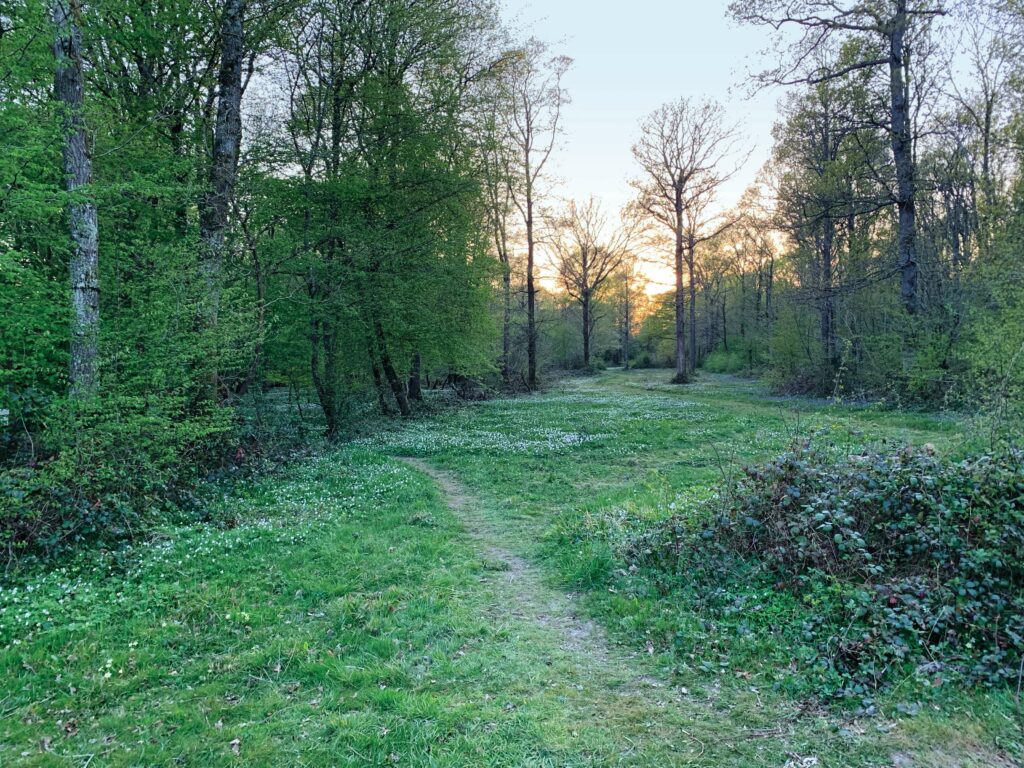
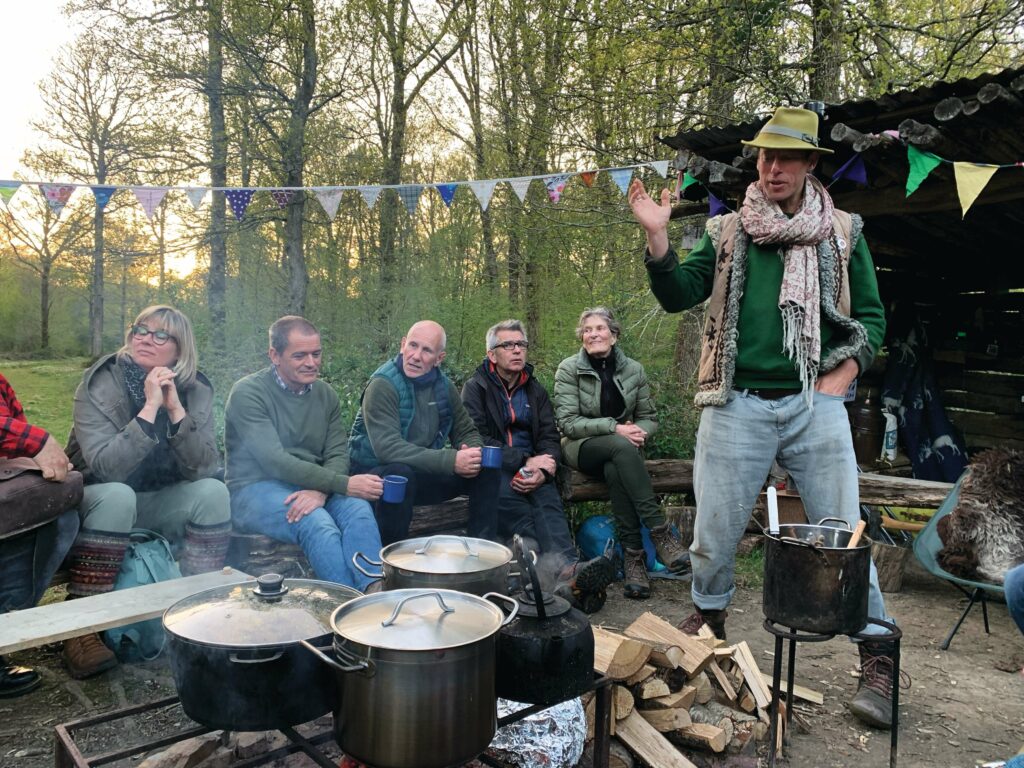
WILD SONGS OF SPRING
I’m here on a Singing with Nightingales experience, led each spring by Sam Lee on a farm in Sussex – a location kept secret. This farm has a long-term rewilding vision. Right now, the coppiced beech forest is filled with bluebells, yellow primulas and wood anemones, which feed hundreds of varieties of butterflies and other important insects that are struggling elsewhere. It is a haven for little birds, especially passerine songbirds – with tits, thrushes, finches, sparrows and blackcaps flitting around fearlessly.
Around 15 of us arrived in the early afternoon and pitched up on the off-grid campsite. Sam led us on a walk around the farm, talking about its biodiversity. It’s not the first time I’ve met Sam – we were both musicians on the London folk scene years ago – but this is a side of him I’ve never seen before. His 2021 book, The Nightingale, is a well-researched text about the increasingly elusive bird, but he also has a wealth of knowledge about many other native birds. I learn more about listening to and identifying birdsong in this hour-long wander than any book could teach me. Later, we gathered for dinner by the fire, ready for an evening of nightingale stories, facts and music. Tonight’s guest musician is Anna Phoebe, a concert violinist who is here for an experience she wouldn’t get at Cadogan Hall.
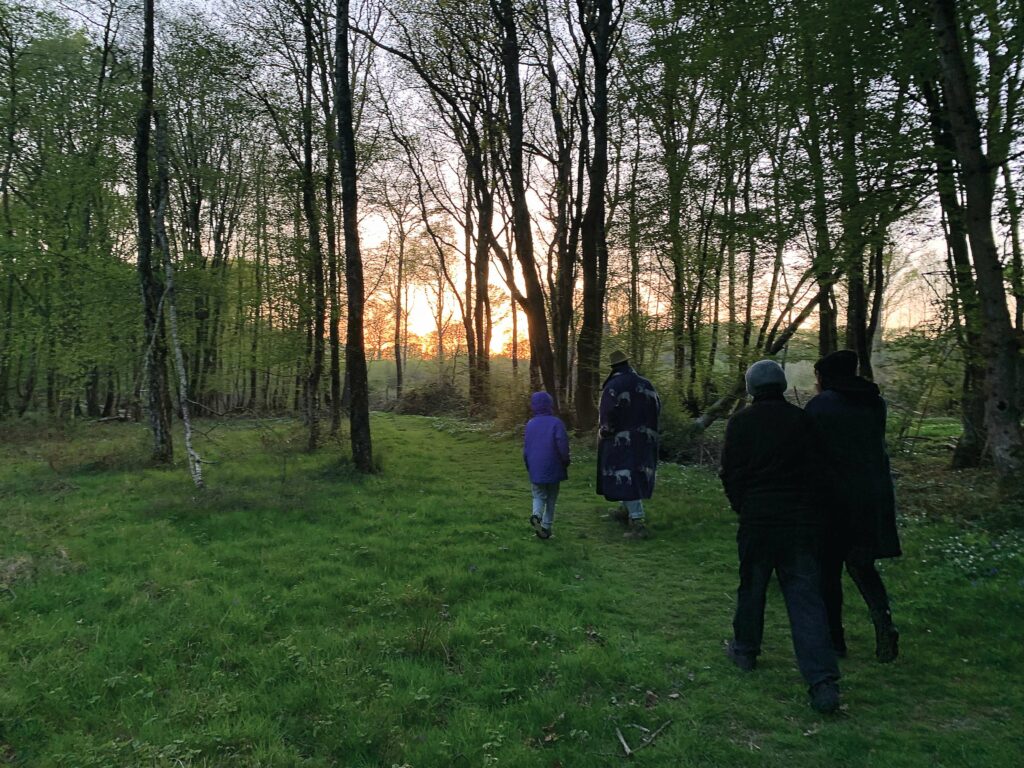
We squeezed on to benches with the rest of the group: I chatted to a mother and son who had flown in from Spain, a group of outdoorsy-looking older women, and a couple of minor celebrities I recognised from the 1990s. What unites us all, visually at least, is a lack of branded clothing – we had all been asked to wear wool, to minimise any rustling. Similarly, to bring our night vision up to full capacity for the walk to the nightingale site, we’d been asked to turn off all devices and artificial light.
Sam cleared the chatter by breaking into a ballad, amiably dismissing the clapping that followed. “Sometimes the silences that hang after the nightingale song, and these old songs, are as much a part of the song itself.”
As the wall between performers and audience was removed, centuries suddenly fell away. Now we were among our Neolithic ancestors, sitting in a woodland that we’d coppiced for fuel and tools, speaking and singing around a large crackling fire, surrounded by the native birds that were once prolific on this island.
When the time came to walk to the site, communicating only through whistles, this new primal connection didn’t let us down. No one tripped or got lost, navigating the countryside with only the stars to guide us.
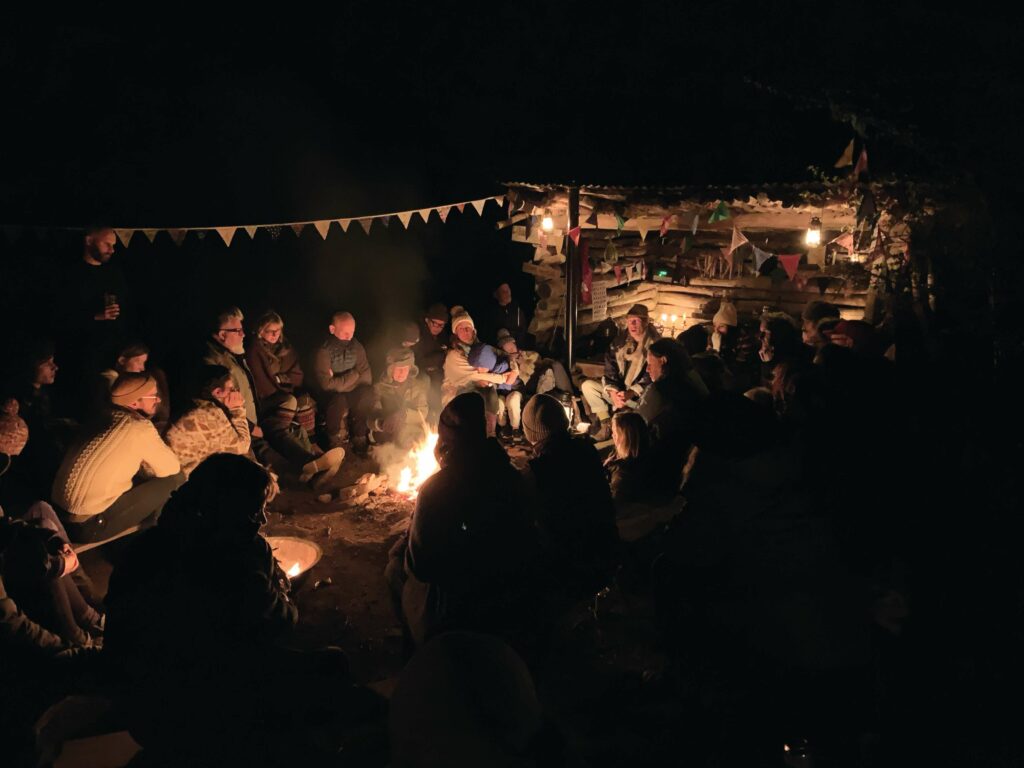
Now the musical dance begins – and it is spectacular. The nightingales that sing are always male, and their song is a declaration of territory. They are prompted to mimicry through instinct: a rival spins a tune, they copy and elaborate on it. They are displaying their sexual prowess, and once they have mated, the singing stops. To hear it is an incredible privilege, and one I hope my children will be able to experience. But it may have to be soon.
“We are living in this great age of extinction, and birds like the nightingale and cuckoo and the turtle dove are in enormous peril right now,” says Sam. “One of the things we need to do in our practice is to love nature that bit harder: love what we have and celebrate it while it’s here. The great tragedy for me is that these birds disappear into history, into silence, without anybody really noticing it.”
To book, go to thenestcollective.co.uk/singing-with-nightingales. Tickets from £85 per person, including dinner.
WHERE TO HEAR NIGHTINGALES
Nightingale territory in the UK is decreasing year-on-year, and it’s now almost exclusive to south-east England. The best time to hear nightingales is after dark. For the best chance of success, be patient, wear non-synthetic material that doesn’t rustle, and keep torches to a minimum.
FIVE NIGHTINGALE WOODS
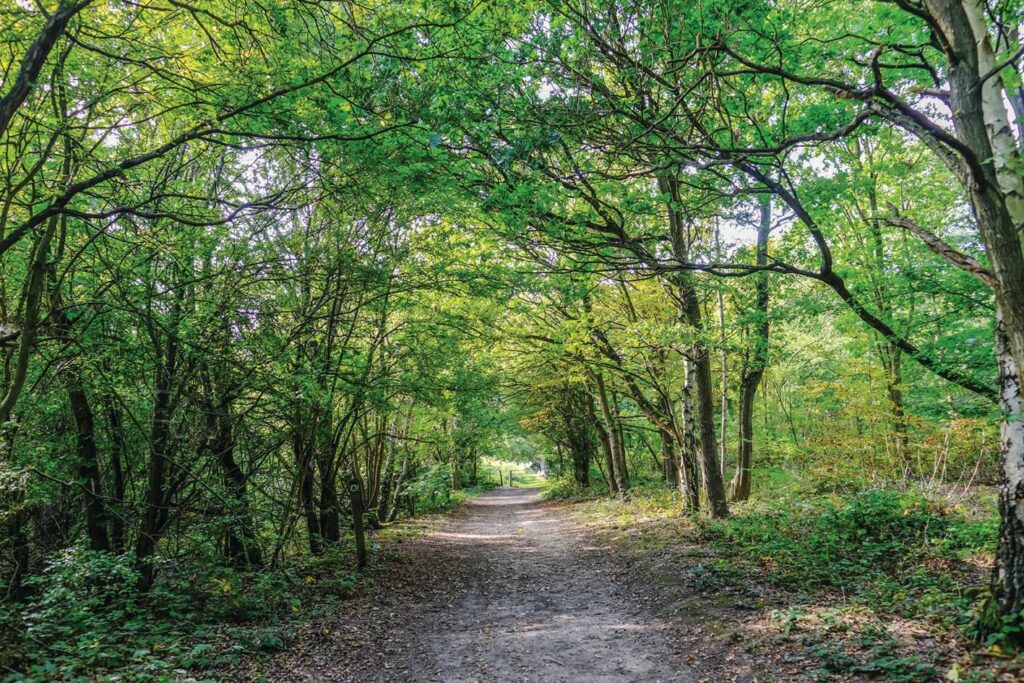
Hainault Forest, Essex
Once a royal hunting ground (above), it’s now home to wood warblers, woodpeckers and the rapidly diminishing turtle doves.
Dering Woods, Pluckley, Kent
Ancient woodland with a healthy population of dormice, reptiles and fritillary butterflies. Listen out, too, for the cuckoo at dusk.
Priestly Wood, Suffolk
The rare wild pear tree can be found in this coppiced woodland, among the bluebells and orchids. Look for badger tracks, too.
Moat Wood, Sussex
This woodland has a medieval moat, and its coppiced trees are a draw for nightingales. It’s also a stronghold for adders.
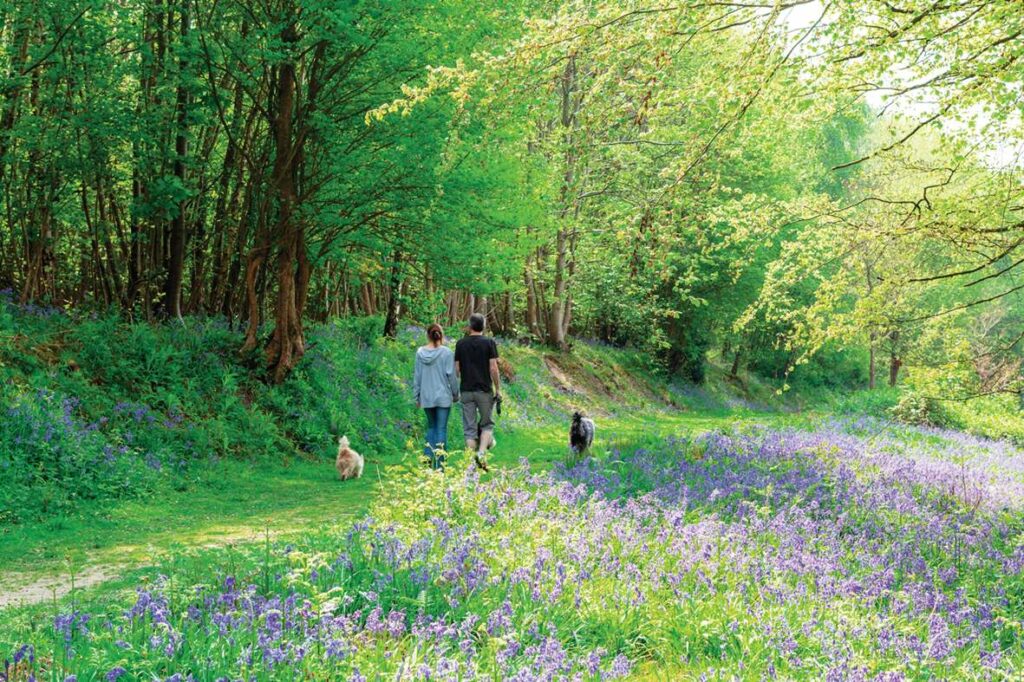
Brede High Woods, Sussex
Rare beetles, prehistoric lampreys and even wild boar roam the ancient pathways of this beautiful Sussex woodland (above). If you’re there at dusk listening for nightingales, look out for glow-worms lighting up the paths.
GO FOREST CAMPING
Forest camping is a wonderful way to spend time in nature. There’s the chance to spot bats at dusk, take night walks and bed down to hear the hoots and shrieks of native owls. However, you can’t simply pitch up in any forest. Although legal in most of Scotland, wild camping options are extremely limited in England and Wales. Some landowners are happy to host wild campers, provided they respect the land. See the ‘Beginner’s guide to wild camping in the UK’ on our website for more details. countryfile.com/wildcamping
Forest campsite facilities can range from manicured grass pitches and sparkling laundry rooms to less formal sites with compost toilets and solar showers. Not all allow campfires – but don’t let not having a fire put you off as it can bring wildlife that bit closer.
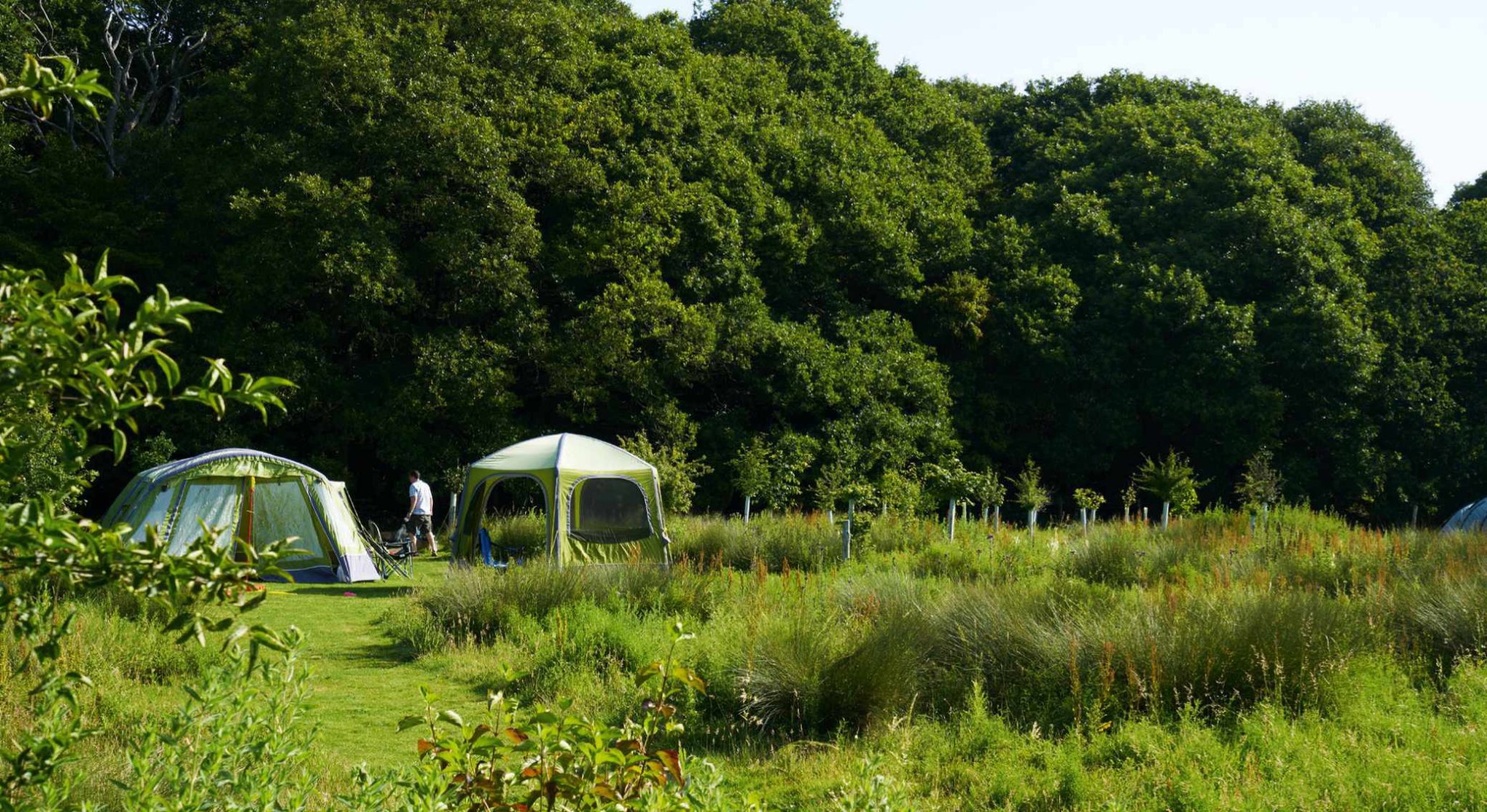
FOREST CAMPSITES TO TRY
Glenmore Campsite, Cairngorms
Pitch up among the trees looking out on to the shores of beautiful Loch Morlich, of which there is private access to its sandy beaches. Look out for red squirrels and golden eagles. glenmore-campsite.com
Fire and Stars Woodland Camping, Leicestershire
A back-to-basics site set in 19 hectares of woodland, run in partnership with Leicestershire National Forest and Forestry England. Money generated from camping goes back into upkeep of the forest. Listen out for a wide variety of owl species. fireandstars.co.uk
The Secret Campsite, Barcombe, East Sussex
This meadow campsite borders a small coppiced woodland where nightingales return each year. It is very near where the Singing with Nightingales event takes place, so there’s a good chance of hearing the birds between April and August. Plus, you can light a fire. thesecretcampsite.co.uk
Thetford Forest, East Anglia
Spanning more than 18,000 hectares, Thetwood Forest has several woodlands, including High Lodge Forest Park for kids. There are two options: Thetford Forest Club for caravans (caravanclub.co.uk) and Oak Lodge Glamping (oaklodgeglamping.co.uk).
Sherwood Pines, Nottinghamshire
This Forestry England site has lots to offer families, including cycle trails and bike hire, forest walks and the biggest tree in England, the Major Oak. Listen out for cuckoos from April to August. campingintheforest.co.uk
Postern Hill, Savernake Forest, Wiltshire
Savernake Forest has some seriously old trees including the 1,100-year old Big Belly Oak. There are also bats, owls, deer and nesting red kites. campingintheforest.co.uk
Wrekin Forest Camping, Shropshire
A fantastic off-grid forest campsite a short drive from Wrekin mountain and forest. The site has warm running water and plenty of firewood as well as access to a forest school with all the outdoor kit your kids may need. wrekinforestevents.co.uk
Kitewood Camping, Fishguard, Pembrokeshire
Set in 24 hectares of woodland, Kitewood has just 12 tent pitches, which gives it a quiet, family feel. Each pitch has its own compost toilet and hot shower. Organised activities include pond dipping, bat walks, bushcraft and a weekly BBQ. kitewoodcamping.co.uk
• Find more details on our website at countryfile.com/forestcampsites